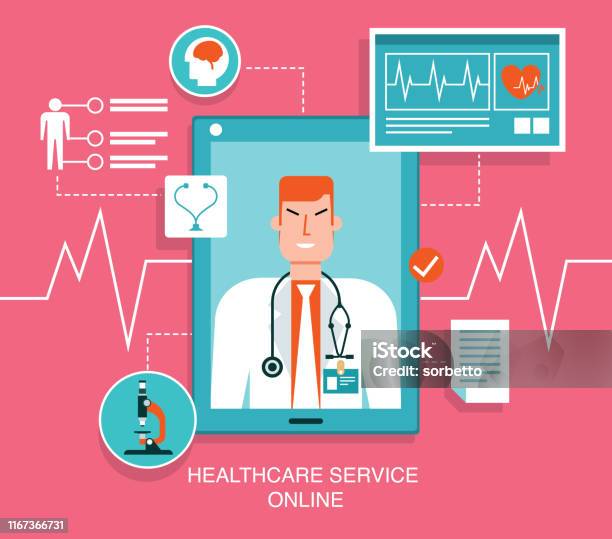Subscription Based Healthcare: Changing the Method We Think Of Health
Subscription Based Healthcare: Changing the Method We Think Of Health
Blog Article
How Subscription-Based Healthcare Is Revolutionizing the Medical Sector

The Surge of Subscription Health Care
In recent years, the health care market has seen a significant change towards subscription-based designs, reflecting broader customer fads favoring convenience and predictability. This transformation is driven by the boosting demand for even more individualized and accessible treatment solutions. Membership healthcare, in some cases referred to as attendant medicine or straight health care, uses clients a fixed regular monthly fee for a series of clinical solutions, significantly changing conventional fee-for-service models.
The surge of subscription health care is assisted in by improvements in innovation, which enable structured interaction between carriers and clients - subscription based healthcare. Digital systems and telehealth services have come to be integral, supplying patients the ability to arrange visits, gain access to medical records, and get examinations online. This technical assimilation not only boosts client interaction yet also enables providers to deliver much more effective care
In addition, the registration version lines up with the developing assumptions of individuals who look for more control over their healthcare expenditures and experiences. By eliminating the unpredictability of co-pays and insurance policy cases, subscription-based healthcare provides a uncomplicated and clear approach. While this model is acquiring traction, its proliferation deals with challenges such as regulative hurdles and the requirement for more comprehensive acceptance within the traditional medical care ecological community. Its growing presence marks an essential minute in the advancement of healthcare delivery.
Advantages for People and Suppliers
Subscription-based health care supplies a wide range of advantages for both companies and patients, reshaping the characteristics of clinical care. For individuals, this version provides improved access to medical care solutions.
For healthcare suppliers, subscription-based models cultivate a more sustainable and enjoyable method. Administrative tasks are frequently structured, decreasing overhanging expenses and permitting carriers to dedicate even more time to patient interaction. In general, subscription-based healthcare aligns the motivations of clients and service providers, advertising a much more effective and patient-centered medical care distribution system.
Key Features of the Design
Often, the essential functions of the subscription-based medical care version emphasize its unique technique to delivering medical solutions. Central to this design is the concept of foreseeable, regular monthly payments, offering people a detailed variety of solutions without the unpredictability of conventional fee-for-service frameworks. This design often includes limitless accessibility to primary care services, precautionary treatment, and regular check-ups, guaranteeing that people can engage with their medical care companies proactively rather than reactively.
Additionally, straight communication channels, such as telemedicine and messaging systems, are emphasized, enabling individuals to get timely suggestions and assessments without requiring in-person consultations. This boosts ease of access and convenience, specifically for people with movement constraints or those staying in remote areas. The model additionally cultivates more powerful doctor-patient partnerships, as doctor are incentivized to concentrate on long-lasting health and wellness outcomes instead of temporary gos to.
In addition, subscription-based health care typically incorporates technical technologies, such as electronic health and wellness records and health surveillance apps, to supply individualized and efficient care. Patients take advantage of collaborated and continuous care monitoring, which is tailored to their particular health needs. Ultimately, these attributes collectively develop a patient-centered healthcare experience, focusing on accessibility, cost openness, and precautionary treatment.

Challenges and Factors To Consider
While the subscription-based healthcare design uses countless benefits, it is not without its factors to consider and obstacles. Membership versions might inadvertently favor those with greater socioeconomic standing, possibly broadening differences in medical care access for lower-income individuals that might struggle with month-to-month charges.
Another difficulty exists in anchor regulative compliance. Subscription-based healthcare needs to browse an intricate internet of policies that differ by region, consisting of problems around patient confidentiality, information defense, and state licensing needs. Guaranteeing conformity without hindering the model's flexibility and technology can be intimidating for providers.
Furthermore, there is the danger of overutilization or underutilization of solutions. Patients paying a repaired cost may overuse solutions, causing enhanced functional prices, while others may underutilize as a result of be afraid of burdening the system, possibly overlooking required care.
Future Potential Customers and Innovations
The landscape of subscription-based health care is positioned for change through emerging innovations and progressing leads. As modern technology remains to breakthrough, the assimilation of expert system and device learning offers considerable possibilities to enhance diagnostic accuracy and streamline person monitoring. Predictive analytics can transform precautionary care by identifying prospective health dangers prior to they show up, consequently lowering both expenses and the worry on medical care systems.
Moreover, telemedicine is readied to increase within membership versions, offering people increased accessibility to medical care professionals regardless of geographical restraints. This not just facilitates connection of treatment however likewise equips clients to engage more proactively in their health management. Additionally, blockchain technology offers prospective in securing person data and guaranteeing interoperability throughout systems, promoting trust fund and transparency.
The development of customized medicine is an additional frontier, with membership designs providing an unique framework for providing customized health and wellness services. Hereditary testing and customized therapy plans can be flawlessly integrated, lining up person requires with details medical treatments. Partnerships between technology firms and health care service providers are likely to generate innovative services, boosting client experiences and results. As these leads emerge, subscription-based medical care has the potential to redefine exactly how treatment is provided and accessed.
Conclusion
Subscription-based medical care is changing the check out here clinical sector by using a more easily accessible, foreseeable, and patient-centered strategy to clinical services. Regardless of challenges such as regulative obstacles and prospective differences in access, the membership model holds guarantee for a more customized and reliable healthcare experience.
Membership healthcare, occasionally referred to as attendant medication or direct key treatment, uses patients a fixed monthly cost for a range of clinical solutions, substantially altering traditional fee-for-service designs.
Furthermore, the subscription design lines up with the evolving assumptions of clients who seek more control over their health care costs and experiences. For clients, this version gives boosted access to medical care solutions. On the whole, subscription-based health care aligns the motivations of this people and service providers, promoting a much more efficient and patient-centered health care delivery system.
Additionally, telemedicine is set to expand within registration models, offering individuals raised accessibility to health care professionals regardless of geographical constraints. - subscription based healthcare
Report this page